Thomas Orr
Thomas
Orr (1782-1866), Armagh, Northern Ireland
to Anderson Co., South Carolina, and Sarah ___ (1796-1864-5)
Compiled and copyrighted June 2010 by
Linda Sparks Starr
We are fortunate so many extant records provide clues to the specific
birthplace of Thomas Orr. The earliest record is the power of attorney
given to him by his father and paternal uncles and aunt 17 April
1804. It identifies him as “Thomas Orr of Bellaheagh in the
County of Armagh now aged about twenty one
years.” Alexander as his father
(reported as a
statement of fact by most researchers) comes from this POA. But in
truth the record doesn’t say who the father of Thomas is. The
fact Alexander and Thomas were the only two from Armagh is a good clue
to their relationship, but it’s no proof. Years later
Thomas filed two petitions requesting citizenship. One identified
him as “a native of the County
Armagh in Ireland [and said he]
arrived in the United States in November 1804.” Thomas,
then, is
surely the same person as Thomas Orr of Richhill in County Armagh
found on an 1804 transported list by Tepper. [page 317] The
no-longer-working web sites of Kerry Orr and Rick Holloway went farther
by adding Thomas of Rich Hill set
sail from Belfast 21 August 1804 on
the Lady Washington. However, neither provided a source
for this
additional tidbit of information and neither web site is now
accessible.
Thomas Orr's signature in 1826

The power of attorney was written on a piece of paper that could easily
be tucked into the corner of his trunk. But it was so important that
Thomas probably kept it closer to his person during his travels.
The signature of David Hamilton as witness turned the POA into an
identification card. A South Carolina merchant, familiar with
Hamilton’s signature, attested the signature in a Charleston
court thus identifying the Thomas Orr standing in the court room as the
same Thomas Orr named in the POA. Later Thomas presented the
certified copy of the POA written by the court clerk in Charleston to
the District Court of Pendleton. Thus Thomas Orr was able to
prove he was the same Thomas Orr named in the POA and was thus
authorized to manage and distribute whatever remained of William
Orr’s estate.
One of the above mentioned web sites identified Thomas’s
occupation as clerk. His Uncle William was a merchant and it’s a
logical guess that Thomas was too. But that is not a documented
fact and he once described himself as a "poor labouring farmer".
However, in the same document, he also attested to helping setup
William’s son as a Merchant. Simple farmers lacked either the
connections or ready money needed for entry into the world of
trade. Two things point to Thomas having a career besides
farming. The first indication comes with “reasonably assumed
events” at the time of his arrival.
Few careers allow time off for travel or family-related business and
this is basically what Thomas did in 1804. He doesn’t
appear to have been independently wealthy and it’s doubtful his
relatives were picking up all the travel and living expenses for his
venture to South Carolina. After all, there were other ways of
getting the cash from their brother’s estate. Therefore, it seems
logical Thomas’s journey to South Carolina was also related to
his budding career. He arrived at the port of Charleston sometime
in November 1804 and his name appears in the Pendleton District record
books early February 1805. Even allowing for the
slowed-by-winter-weather travel from the coast to the up-country
foothills, it is not unreasonable to think Thomas tarried along the
way. Hamilton’s signature on the POA would have opened the
door for Thomas to the Charleston trading community. This would
be especially true if Hamilton also wrote a letter attesting
Thomas’s good character and competence in record keeping.
Introduced as Hamilton’s friend or colleague, others were likely
to do business with him. The fact that eighteen plus years later
Thomas set William’s son up as a merchant adds credence to this
scenario. But that’s all it is: an assumed story based on a
handful of facts.
The clerk for Pendleton District Court didn’t enter the POA into
the record books until June 1805 and he failed to note in which court
session the POA was presented. But another record shows Thomas
Orr was in Pendleton District by 20 Feb 1805; he witnessed the deed
Vincent Tims Sr. and William Timms Sr. to Thomas Johnston.
Surely it wasn’t pure coincidence the grantee, Thomas Johnston,
was identified as a storekeeper. [Willie p. 370 citing Pendleton
District Conveyence Book H p. 207-8]
After signing two
surety bonds written as one
July 1805, Thomas was in control of all of Uncle William’s
holdings. Each bond was for two thousand dollars and essentially
promised to hold the court appointed administrators of William
Orr’s estate free from any and all future claims by
William’s heirs. The first bond seems directed at one particular
individual whose name is smeared. The other bond appears to cover
anyone and anything the former bond didn’t. Thomas identifies
himself as “of the District of Pendleton and State of South
Carolina and of County Armagh in Ireland.” This might
suggest he planned to return to Northern Ireland some day; or perhaps
it’s just his way of saying he is one and the same person named
in the POA. If returning to Ireland was ever his intention, he
appears to have changed his mind by 1808. In March of that year
he identified himself as a resident of “only” Pendleton
District when he sold his uncle’s one-half interest [transcription
and original]
in the grist
and saw mill on twenty three mile creek to William Rankin, owner of the
other half interest.
Although unrecorded one of his first actions under the power of
attorney was to sell the 150 acres
on which William Orr had lived. The date of the original sale and
the date when
Thomas realized final payments were not forthcoming would fill in some
gaps in our understanding of Thomas’s first years in Pendleton
District. But all we now have is this statement within the 1827
petition: “... about 150 acres
of the land whereon the said
William [Orr] lived ... to William Spruell ... unable to collect
the purchase money from Spruell [I] rescinded the contract. ...
“ The statement in the petition goes on to
say:
[I] “paid over to one of
the persons who gave [me] the
power of attorney the proceeds of the lands sold and made advances for
this tract...“ The only other real estate William
Orr owned
in Pendleton District was one-half interest in the Rankin Mills and
adjacent land.
Perhaps Thomas purchased the 330 acres from William Givens 23 October
1813 in anticipation of his coming marriage. [Anderson Co. Grantee
Index Bk M p. 156] The year of that marriage, let alone a specific
date, is not known. Usually given as “circa 1814”
based on the known birth date of their eldest child, little is known
about his bride. Her given name Sarah and date of birth (1 July 1796)
come from the Bible entry and her birthplace in Georgia from the 1850
census. Sarah’s parents as John Wilson (died 1836)
and Martha (Miller) is suspect for none who give them as her parents
provide a source for the information. The 1820 census
[Osburn] shows Thomas head of a household that included he and
his wife, three children under ten (one boy and two girls) and 11
slaves. The three children were Sarah Ann and twins Alexander and
Abigail “Abby”. How Thomas acquired these slaves is not
known. Slaves are not mentioned in William Orr’s estate
papers and it’s doubtful Thomas had realized enough personal
profit to purchase so many in this short of time. Therefore it seems
likely the answer lies with his marriage to Sarah.
In 1826 James Orr, otherwise identified as “Uncle” William
Orr’s natural son, petitioned
for the return of the 150 acres
once owned by his father. This is the same 150 acres originally sold by
Thomas to William Spruell and which Thomas later purchased with his own
money from his relatives in Ireland. Even though Thomas had been
a naturalized citizen since October 1823, James used Thomas’s
lack of citizenship status at the time of these transactions as the
reason the courts should now give him (James) title to the land. James
made a valid legal point. From the beginning of British
colonization, land acquired by non-British citizens fell into a
different category from land owned by citizens.
Thomas countered James’s action by sending two petitions to the
elected state law makers. The first went
to the state Senators
requestiong they simply make his previous actions, under the power of
attorney, legal. His other petition,
to the state House of Representatives was a bit more involved,
but basically requested they allow him to keep the title to this
tract. Names of those attesting
Thomas Orr’s good character included prominent Pendleton District
residents. Although some men signed both petitions, the two lists
differ.
Two sets of signatures attesting his
good character:
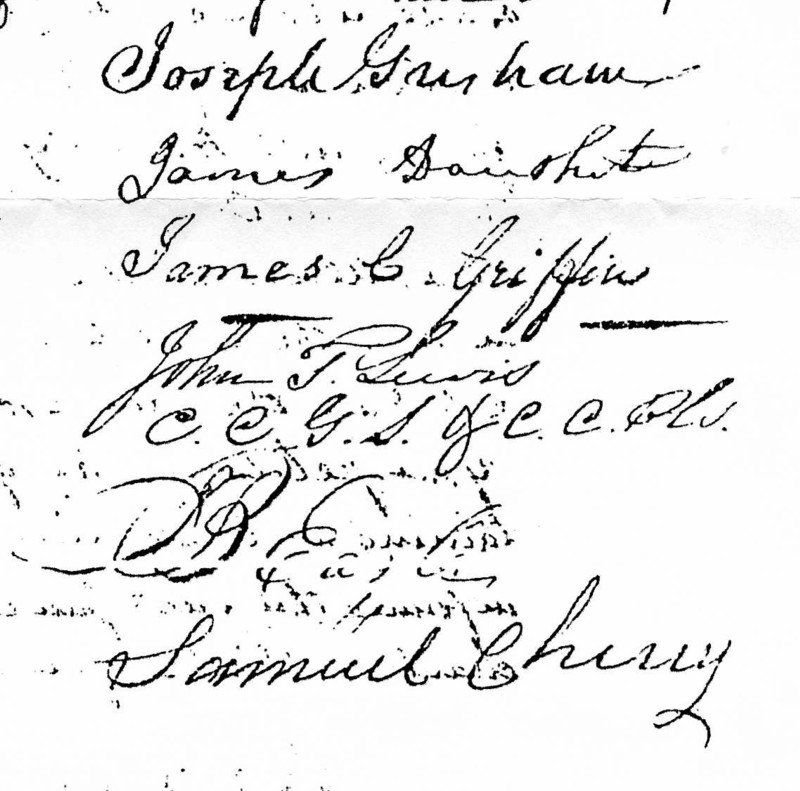
The petition to the House of Representatives gives us some insight into
the prior relationship between the two cousins: “He
[Thomas] has lately learned that one James Orr __ Natural (or
illegitimate) son of the said William Orr has petitioned the
Legislature to vest in him the legal title to the said tract of 150
acres of land or to have the same Escheated [and] the proceeds given to
him. Your petitioner has greatly assisted the said James in obtaining
an education and getting him into Business & is informed the said
James is doing good business as a merchant While your petitioner
is a poor labouring Farmer upwards of 45 years of age with a family of
seven small children and the prospect of increasing dependent on him
for support ... And vest in him his heirs and assigns the legal title
of the Tract of Land whereon he now lives, containing 150 acres more or
less.”
The 1830 census [Osburn] taker recorded the household of Thomas Orr
consisted of three children under five: Thomas C., Margaret and
Mary; three boys between five and ten: John B., William M. and
James; and three children ten to fifteen: Sarah Ann and twins,
Alexander and Abigail. In 1840 the census shows Thomas was head
of a household of ten family members. The three youngest were all
girls: Amanda, Matilda and Eliza. Those between ten and
fifteen were Thomas C., Margaret and Mary. Only two boys between
fifteen and twenty were still at home. Names other than the head of
household weren’t listed that year, so we can only guess which
two these are. John B. and William B. seem the best guess for
James is said to have married about 1840. But it’s even more
likely that James is the James B.
Orr blacksmith on the 1850
census. If true, it’s logical to conclude the 19 year old
James in 1840 was living with his teacher while learning the blacksmith
trade.
For unstated reasons Thomas set up a trust fund for his
eldest
daughter, Sarah Ann Rankin, with his son John B. Orr and Thomas H.
McCann, Trustees. Although nothing
derogatory is ever said against her husband, the Trust was specifically
created for “the Sole and
Seperate use of my Said Daughter Sarah
Ann Rankin for life and after her death to the Heirs of her
body.” The trustees were given the power to invest
the
fifteen hundred dollars any way they thought proper.
Additionally, Thomas made it clear, this was her full claim to any
future interest in his property. Thomas was seventy-two years old at
the time he signed this trust and his original signature is certainly
that of an older individual.
Thomas Orr's signature in 1854:

Returning now to the question: What did Thomas do for a living?
The appraisal of his estate indicates, from the late-1850s until months
before his death, Thomas had ready cash to lend neighbors and
family. In fact he appears to be the community’s unofficial
banker. Small country stores were dependent on the local farmers who
were more likely to trade farm goods for needed store items or keep a
running tab until the cotton crop came in. Yet, Thomas had cash
to lend even during the war years. He was especially
generous to his children.
But things changed for this family and not just due to the continuing
conflict. The original petition and thus name of the petitioner is not
known, but probably one of the sons decided something had to be done to
protect both Thomas and Sarah and their wealth. June 1864 the Anderson
District Court issued a writ de lunatico inquirendo to direct a
group of jurors to look into the state of mind of Thomas Orr. August 13
his wife Sarah signed
the petition with several of their children asking that William M. Orr
be appointed to the Committee for his father. Thus we have a firm
"death after" this date for her. Otherwise, researchers do not agree on
the year of Sarah's death (1864 or 1865); they do, however, agree she
died October 25.
The death date for Thomas, presumably
from the Bible record, is widely reported as 3 February 1866.
Although their death place is reported as Brushy Creek Township,
Pickens County, his estate was probated in Anderson County. This
proves, in my opinion, he was living on that side of the county line
when he died.
[LSS: I remain neutral in the discussion of where they lived for there
are good points made by both sides. Descendants Ann Jones and
Alice Starr were driven to various family home sites in the Pendleton
County area late 1970s. This photo taken by Alice Starr is identified
as the home of Thomas Orr. At the time I asked, Aunt Alice
couldn’t remember the name of the cousins who drove them around,
and neither she nor Ann pressed them for the source of their
information regarding the former homeowners. The photos were
among those passed among RANKIN attendees at a reunion in 1990; none of
those from South Carolina recognized this house or the one identified
as William Rankin’s mill. That’s the extent of my
personal knowledge of this picture. I include it here in hopes
someone knows more about its origins.]
House said to be the home of Thomas Orr
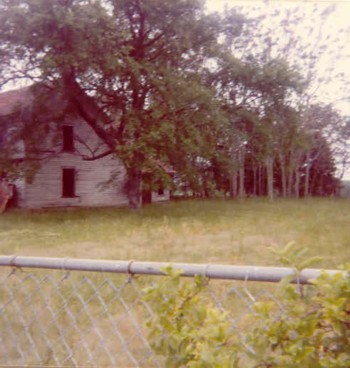
James Orr applied for Letters of
Administration on his father’s
estate 13 March 1866. The Twenty
Thousand Dollars surety bond
was signed by James Orr, W. H. Ford
and J. W. B. Orr in the presence of W. E. Walters. The 1864
inquiry into Thomas' competency might explain why only three
physical items are listed as part of the inventory of his
estate:
One bed and stead & clothing; one
lot of books; one old Desk. Most notes due the estate are
considered
good by the appraisers, indicating the person was likely to pay.
Indeed, the first estate accounts record shows many were paid that
first year after Thomas’s death. The specific (if any)
relationship of J.W.B. Orr to Thomas and Sarah is not
known. He
is sometimes listed as their son, but he was appointed an appraiser of
this estate along with Thos. H. McCann, Wm Ford, James Mullikin and G.
W. Rankin (or any three of them). Therefore, J. W. B. Orr cannot
be their son.
Signatures of appraisers for estate of Thomas Orr:

May 1869 James Orr was fully expectant his estate work was complete.
After all, the heirs had agreed among themselves and only the approval
of the Probate Judge was left. James went so far as to label the
top of the first page of his report: “First & Final Return of Exor
Thomas
Orr Dec’d.” Apparently the Judge wanted
something in writing from the heirs for
James returned in October with signatures of eight of the heirs plus
one spouse. The judge was still not convinced.
Most of the remaining estate accounts papers are not dated and, it
appears, they were not all microfilmed in the order they were
originally submitted to the court. Another agreement
between the
heirs was also apparently rebuffed by the probate court. It shows the
amount each heir owed the estate,
had received from the estate, and the difference after the reduction in
value of some notes. One can presume the judge insisted James
press harder for payment of outstanding notes. The appraisal
showed a few dollars remained due from an 1857 judgement Thomas Orr
brought against his son-in-law Chesley H. Brock. Other records show
Mary S. Brock and Sarah Ann Rankin were excluded from collecting
anything more of Thomas’s estate. Sarah Ann’s
exclusion is explained by the 1854 Trust Fund. One can only
surmise the money the Brocks owed originated with the Judgment award.
But perhaps Thomas loaned them additional money for the judgment
appears mostly paid in full in one estate accounting record.
As administrator of the Estate, James brought a Chose in
Action
suit against Andrew Smith identified as a bankrupt. March 1871
James petitioned the court to sell land owned by the defendant to pay
the judgment. The original estate appraisal shows Smith owed the
estate $155 from
December 1859. The probate judge accepted the final accounting
records 28 April 1871.
Undoubtedly, no one was happier than James Orr when the judge signed
the final release.
Except for their daughter Sarah Ann, information on the children of
Thomas and Sarah comes from three sources. The list of distributees in
his estate records documents twelve (not thirteen) children plus the
married surnames for the daughters and the name (with/without initials)
used by the sons as adults. Specific birth dates come from the
transcription by Jim Isom of the Bible family record entries. Also, we
have the work of various Orr researchers, although their information
isn't always in agreement with that provided by others. All
children were born in Pendleton District until the creation of Anderson
and Pickens Counties in 1826. Birthplace of those born after 1826
depends on which side of the county line Thomas and Sarah were residing.
1. Sarah
Ann born 29 November 1815 died 13 June 1897. She
married 19 May 1840 Thomas Franklin Rankin
(1807-1872).
2. Alexander (twin) born 7 August 1817 died 19 November 1897 Pickens
County, S. C. He married August 1842 Malinda Couch (c1820-1890),
daughter John and Mary (Prater).
3. Abigail “Abbey” (twin) born 7 August 1817 died
1870-1875 Grayson
Co., Texas. She married about 1840 William Mattison Wilson
(1819-1859), son of John Wilson Jr. and Isabella (Merritt).
A second
marriage for her is reported, but the name of spouse and place depends
on who is reporting.
4. James born 14 January 1821; reportedly died
c1873. There is a
problem with the identity of this son, who was administrator of his
father’s estate. As such, he signed his name several times
and his
name was entered in the record books several times by court clerks. In
no instance was a middle initial ever used. He, or another James
Orr
(without middle initial) died 1873 leaving a widow Georgiana.
This
James clearly owned property that was once Thomas Orr’s or was at
least
adjacent to Thomas Orr’s land. However, at least one
researcher
identifies Georgiana’s husband as the son of William died 1803,
not son
of Thomas. Moving to the numerous James (middle initial) Orrs.
The
closest James Orr fitting the profile of son of Thomas and Sarah is the
28 year old blacksmith, James B. Orr per the 1850 census. His wife was
23 years old Sarah. Within the probate records for Thomas F.
Rankin is
a bill to the Estate of James Orr (no middle initial). Estate
James
Orr Unfortunately this particular bill is not dated, but one
entry is
important to this discussion: “1872 May 11th To Coffin for
his wife
Sallie 5.00” Although nothing is said
about the relationship
between James Orr and Thomas F. Rankin, it is highly likely they were
brothers-in-law. That said, researchers suggest other middle
initials
for James, son of Thomas Orr, and offer Elizabeth as the wife’s
name
instead of Sarah. Curiously, all researchers give an “about
1873” as
the death date for James, son of Thomas and Sarah no matter who they
list as his spouse or where he died.
5. William M. born 1 July 1822 died 9 February 1893. He married
1st
22 February 1846 Jane E. Orr (1826-1875). Jane was the
daughter of
William and Nancy (Clardy). William M. married 2nd about 1878
Martha
V. Dodd (November 1860 – 30 Aug 1909).
6. John B. (or “J. B.” as he signed his name)
born 29 Febrary 1824
died 25 November 1889. According to one researcher he lived on
part of
his father’s 572 acre tract. He is buried in the Orr-Wilson
Cemetery.
He married 8 July 1844 Elizabeth Ann Wilson (1820-1897).
7. Mary S. born 22 January 1826 died 8 February 1899, Akers,
Grayson
County, Texas. She is buried in the Akers Cemetery near
Sherman. She
married about 1846 Chesley H. Brock (c1813-aft 1861).
Other middle
initials and name given for her include J. and Etta; however, the
probate records clearly show her name as Mary S., as does the tombstone
of one of their children buried in the Orr Cemetery near Powdersville,
SC.
8. Margaret born 25 December 1827 died about 1875 Pickens County,
SC.
She married about 1855 John Jameson (1818-1894), son of William Jameson
and Rebecca (Fowler). Her middle name is given as Caroline or the
initial “A”. However, the probate records only show
her as Margaret.
9. Thomas Caswell (or “T. C.” as he appears in the
probate records)
born 27 December 1829 died 18 September 1918 Luella, Grayson County,
Texas. He is buried in the Luella Cemetery. He married in
1855 Hannah
Harrison Golden (1836-1907). According to one researcher,
Hannah’s
maternal grandfather was John Taliaferro Lewis, clerk of the Pendleton
District Court.
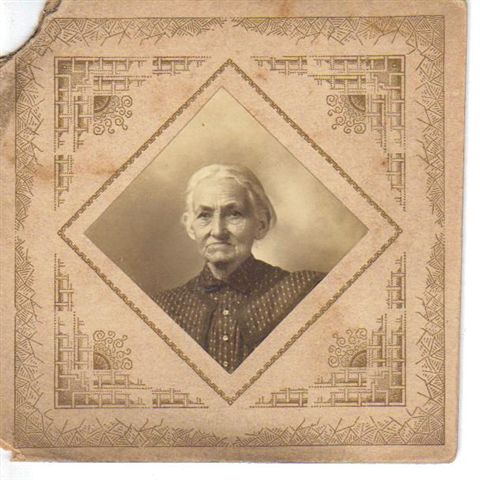
Hannah Harrison Golden Orr (1836-1907)
Photo shared by Penny Brookes
10. Eliza born 28 Nov 1831 died after 1871 Pickens County, South
Carolina. She is buried in the Couch Family Cemetery near Easley,
SC.
She married about 1850 William Couch (c1827-aft 1866) son of John Couch
and Mary (Prater), brother of Malinda who married Alexander Orr (above).
11. Matilda born 16 May 1834 died 10 January 1912 Howe, Grayson
County, Texas. She is buried in the Luella Cemetery. She married
1st
about 1858 P. Franklin McKinney (c1831 – Bef 1866).
Matilda married
2nd after 1860 before 1869 James L. Dickson. Some
researchers give
her full name as Martha Matilda, but the probate records refer to her
only as Matilda.
12. Amanda born 2 February 1836 died 11 or 12 April 1915 Easley,
Pickens County, SC. She is buried in the Jameson Family Cemetery,
Pickens County. She married 1st James Carrol Jameson
(1830-1862),
brother of John Jameson who married Margaret Orr (above). Amanda
married 2nd about 1864 James McAdams
(1790-1881). Her full name is
given by some as Amanda Melvina but the estate records show only Amanda.
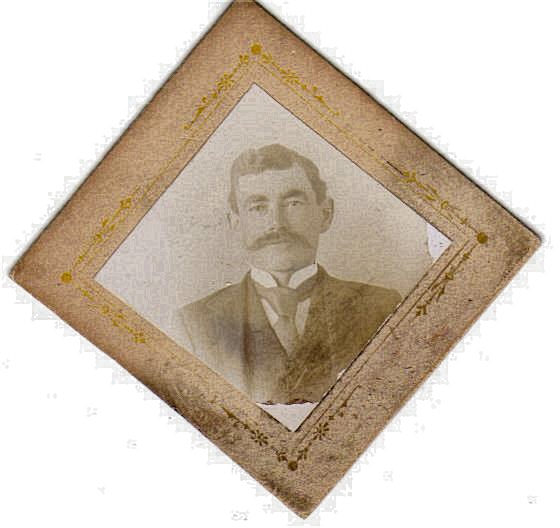
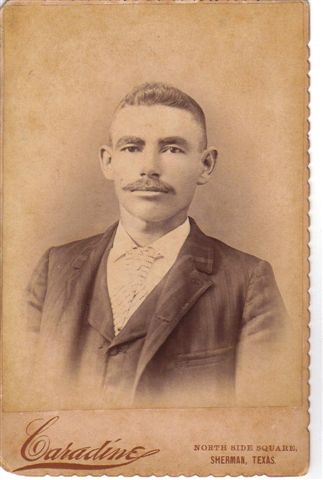
J. Robertson Rankin and Ione McCoy both descended from Thomas Orr and
Sarah Wilson. Among photos once in their possession,
and shared by Penny Brookes, are these two images. Both are labeled "J.
Orr". A more specific identification will be greatly appreciated.
SOURCES
Cheek, Linda G. Abstracts of
Pickens District South Carolina Deed Book A-1 (1st Deed Book) 1828-1831
with many earlier dates. Southern Historical Press,
Greenville,
SC 2003. Abstracts of
Deed Book C-1 (3rd Deed Book 1834-1838 with many earlier dates.
1999 No Thomas Orr in either book.
http://law.jrank.org/pages/5211/Chose-in-Action.html
Osburn, Sherry Crabtree, contributor. 1820, 1830 and 1840 South
Carolina Census records for Thomas Orr posted to
http://www.rowberry.org/rickhsite/orrh.htm
South Carolina Department of Archives & History, Columbia,
microfilm copies of records.
Tepper, Michael editor. New
World Immigrants vol. II 1980 Genealogical Publishing Co.,
Baltimore, Md. “American Passenger Lists 1804-6 (in Report
of the Deputy Keeper of the Records for the Year 1929, Northern
Ireland, Public Record Office (1930) 15; 21-49)
Willie, Betty, compiler. Pendleton
District, South Carolina Deeds 1790-1806 Southern
Historical Press, 2001 reprint. Greenville, SC.
Linda Sparks Starr copyright (c) 2010
Home: http://homepages.rootsweb.ancestry.com/~lksstarr/








